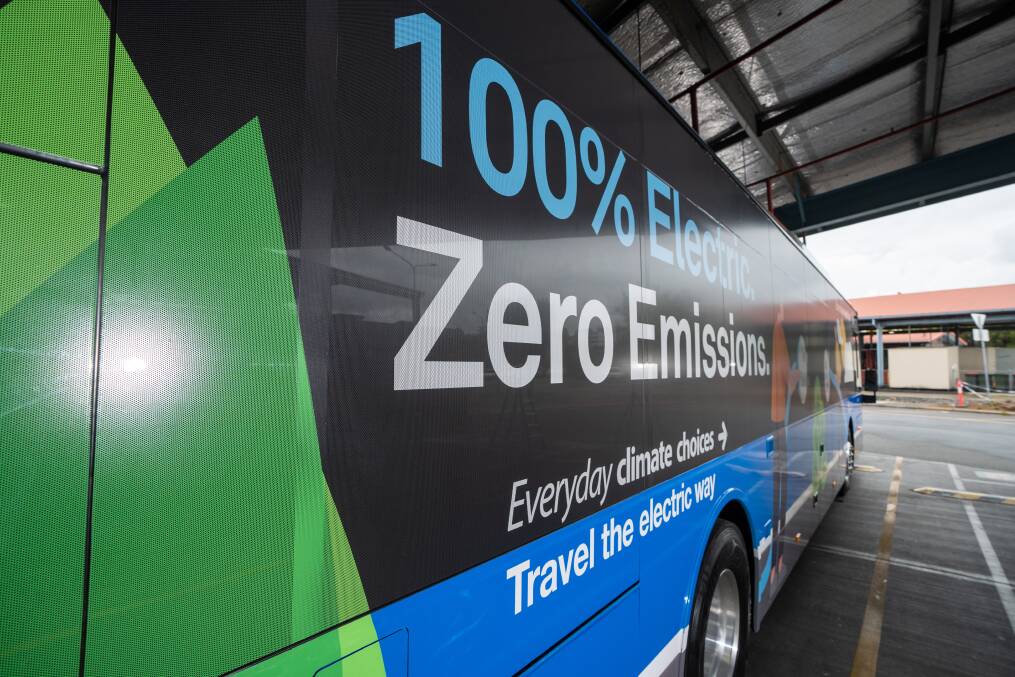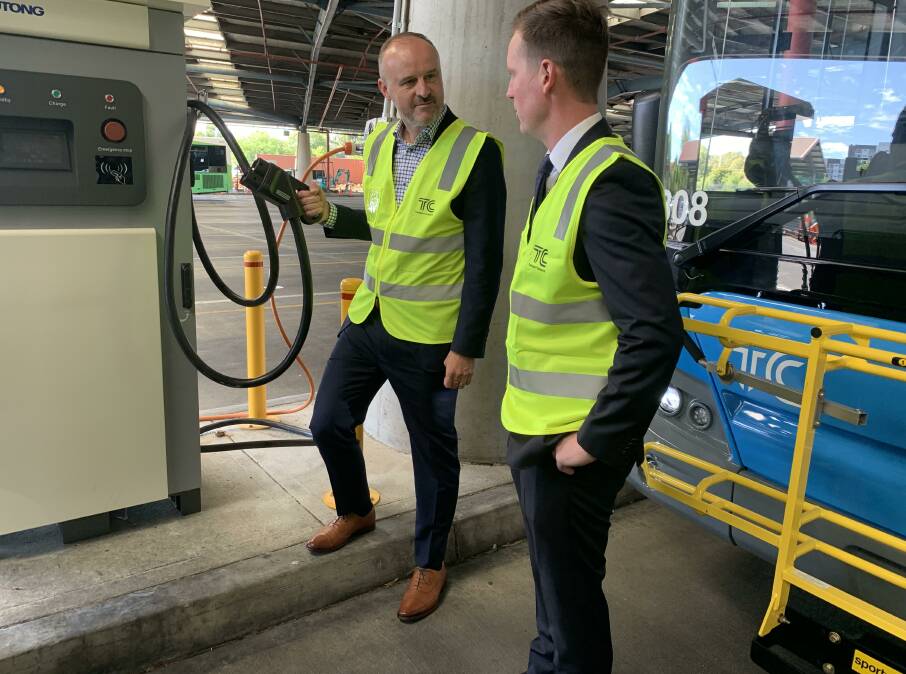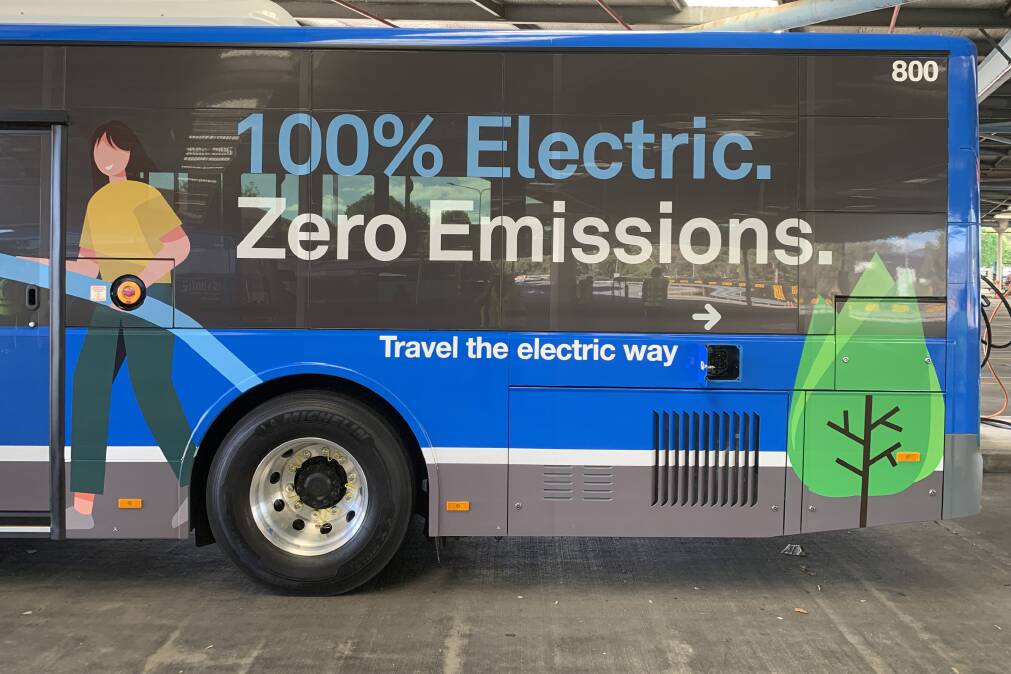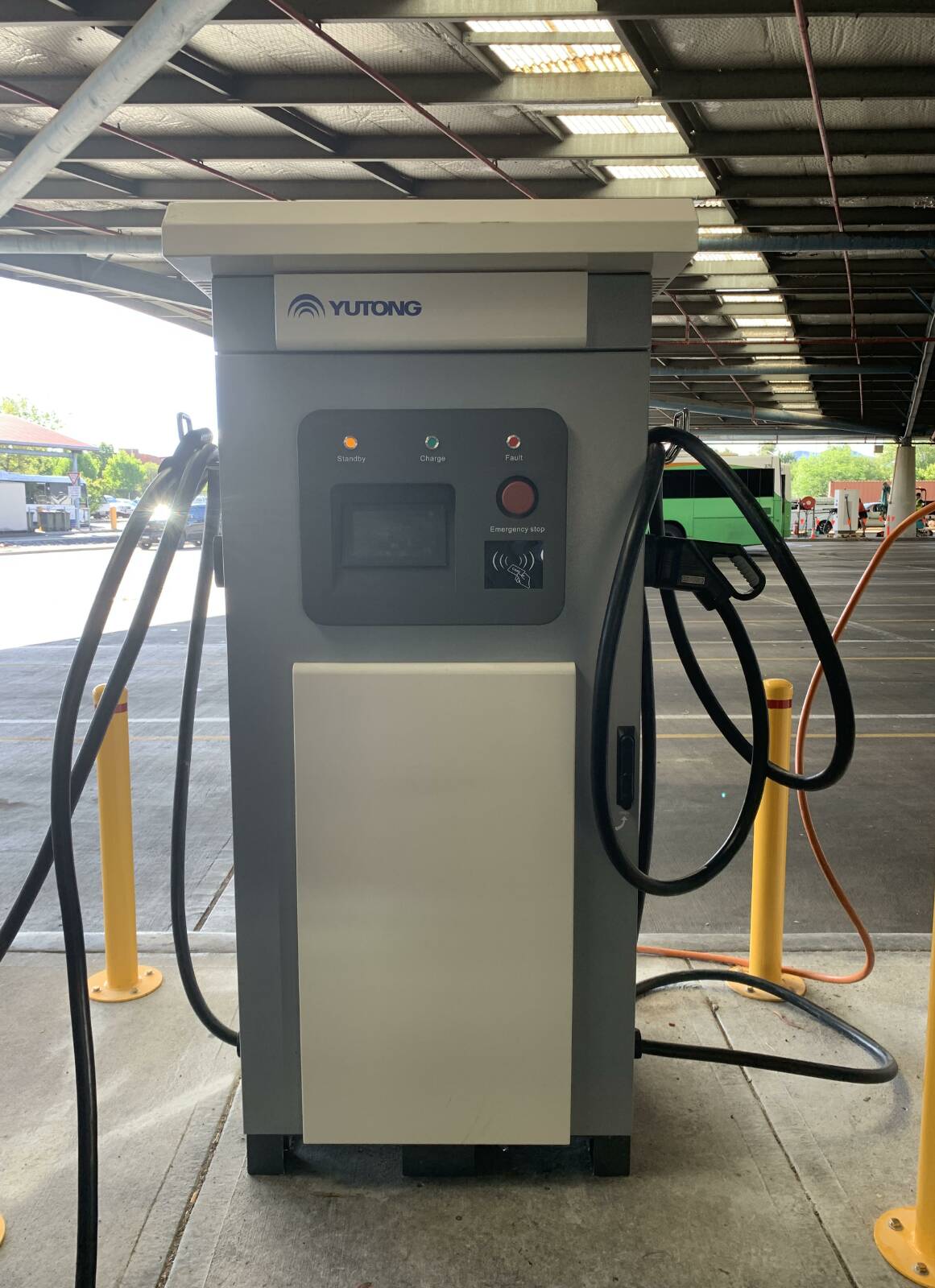
After the big turbo-diesels of the 220 ACTION buses at the Tuggeranong depot are stilled each weekday, their engines have collectively consumed an average 16,000 litres of fuel.
As the ACT's biggest bus depot, all this rolling around the suburbs picking up and dropping off passengers adds up to a 12-month diesel consumption at the single southern site of 4.68 million litres, or a little under half the 10.87 million litres of diesel the entire Canberra bus fleet burned through in 2021-22.
By a rough rule of thumb, one litre of burnt diesel produces around 2.7kg of CO2.
That's over 29,000 tonnes of CO2 being pumped into the atmosphere to shuffle 12.8 million ACT bus passengers around each year.
For a territory pushing hard to net zero in greenhouse gas emissions by 2045 or earlier - and ACTION's heavy transport contributing 50 per cent to the ACT government's own output - a huge transformation is a necessity.

It has started with a trickle feed of eight Chinese-made Yutong electric buses and four Australian-made Custom Denning Element models, but the slow rollout of zero-emission buses into the ACTION fleet is determined as much by supplier capacity as the installation speed of the depot rechargers to keep them mobile.
The Yutongs are fitted with two massive lithium-ion battery packs, one sitting between the axles in the roof cavity above the passenger's heads and another in the rear, behind the rear axle.
The Yutongs progressively will be introduced to the Tuggeranong depot as the charging infrastructure - fuel bowser-sized rechargers perched on the depot's multiple driveway "islands" - is slowly installed.
The Element electric buses will arrive later and use a very different technology.

They operate without the need for cooling systems and can "run" for up to 16 hours or 300kms on a full charge, which is slightly less than the lithium-ion Yutongs. A complete charge cycle of the Element's solid state batteries is expected to take approximately 5 hours.
The demand for electric buses across the country is running at a phenomenal rate, with a raft of manufacturers and importers - many of them Chinese - racing to cash in.
A report by the Australia Institute thinktank last year revealed that there were around 100,000 buses operating across the country, most of them diesel,
The ACT government is competing with all other states and territories to secure contracts and meet its greenhouse gas reduction targets.
In NSW alone, the first phase of its metropolitan fleet rollout will hoover up 1200 electric buses in the next five years and require 11 major depots to be upgraded and installed with charging stations, plus a completely new electric-only depot at Macquarie Park.
The Queensland and Victorian governments have stepped around the supply restraint issue by stating that from 2025, the only new buses added to its fleets will be electric.
That means that like the ACT, they know diesels will be on their fleets for many years to come due to the slow, complex and costly rate of transformation.

The average price of a new electric bus to service a high-load route (44 seated passengers, 21 standing) is between $700,000 to $900,000, depending on the configuration. The ACT has committed $23.6 million to its program over the next three years.
Such is the ferocity to gain a foothold in the market that Chinese electric bus builder Nexport - an offshoot of the fast-growing BYD EV franchise - even proposed to set up a small-scale manufacturing facility in the ACT and supply buses for free for several years. That offer was rejected.
At just after 5am each weekday, as all the diesel engines are progressively fired up in readiness for the morning peak, the concrete and steel aprons of the Tuggeranong bus depot become a cacophany of fuel-injected rumbling and clatter, the fumes from the start-up processes roiling around under the roofline and making eyes water.
The ACT's goal is to have one 180kW charge port per electric bus but the rollout process is slow. Just two chargers are installed to date and installation crews have months of work ahead to pull the cabling needed to charge the rest as they arrive.
Essential to the transformation - and adding another impediment to the mix - is the role of the ACT's power distributor Evoenergy, which has to cut the deep trenches to drop an extra 11.9kms of thick, high voltage cable underground to supply a massive additional 17.3 million volt-amps demanded by both facilities on maximum power draw.
Meanwhile, battery technology is accelerating at a pace which will have the lithium-ion powerpacks of the current electric buses consigned to the recycling bin by the time the full fleet rollout is completed.
This is where solid-state batteries, which don't contain rare earth metals like nickel or cobalt and are made of lithium-metal polymer, are purported to be a superior product in that they have longer-life charge/recharge cycling.
We've made it a whole lot easier for you to have your say. Our new comment platform requires only one log-in to access articles and to join the discussion on The Canberra Times website. Find out how to register so you can enjoy civil, friendly and engaging discussions. See our moderation policy here.







